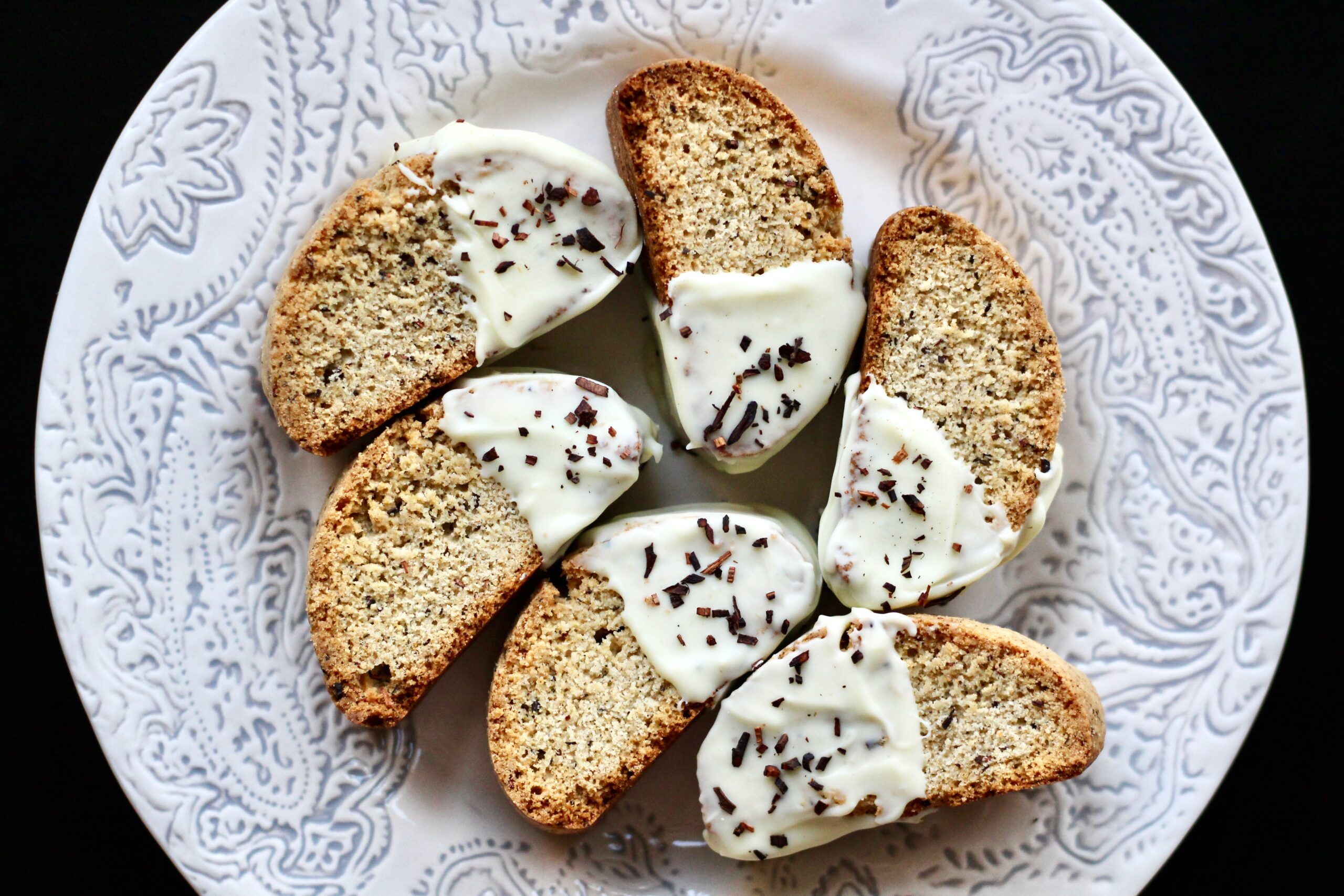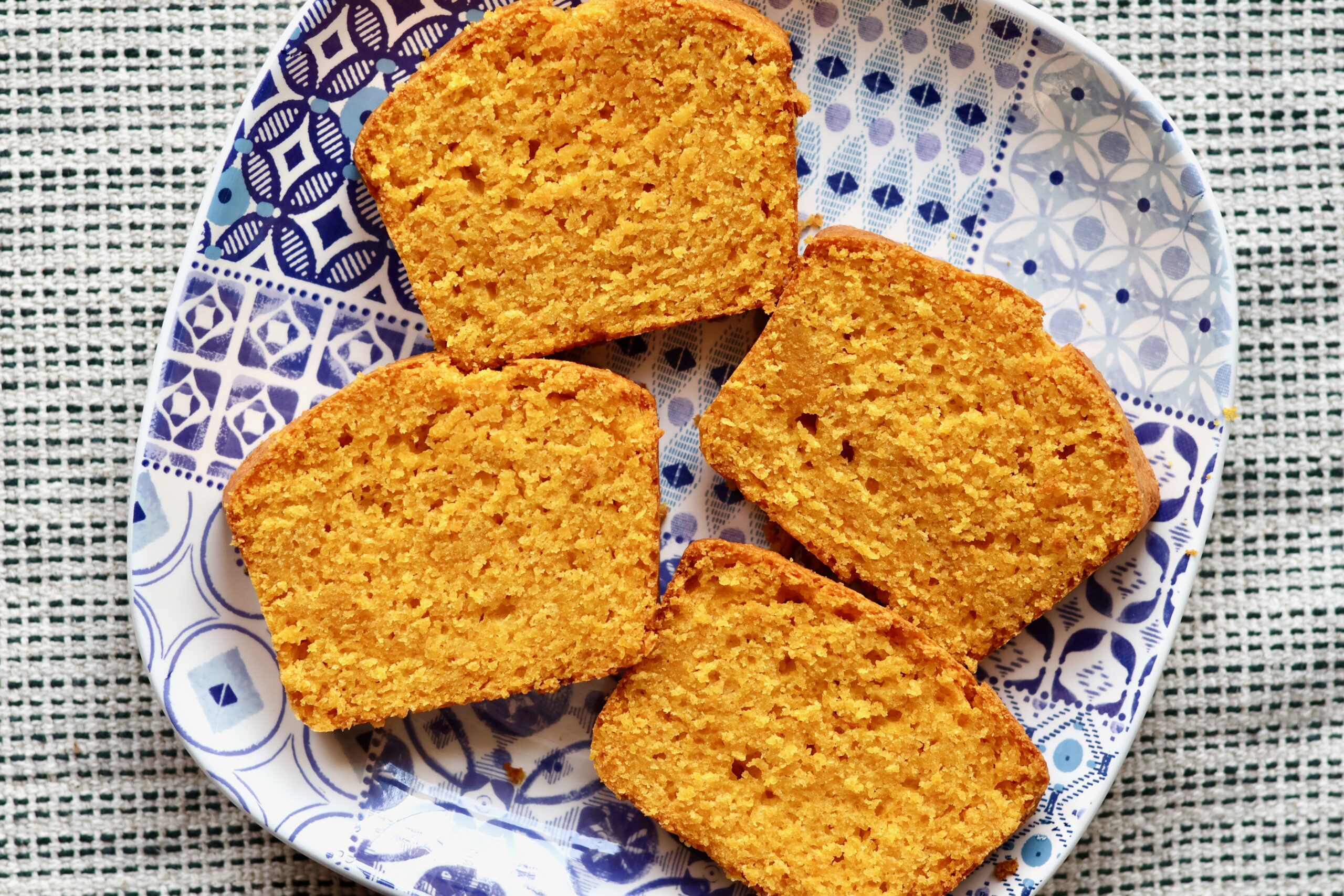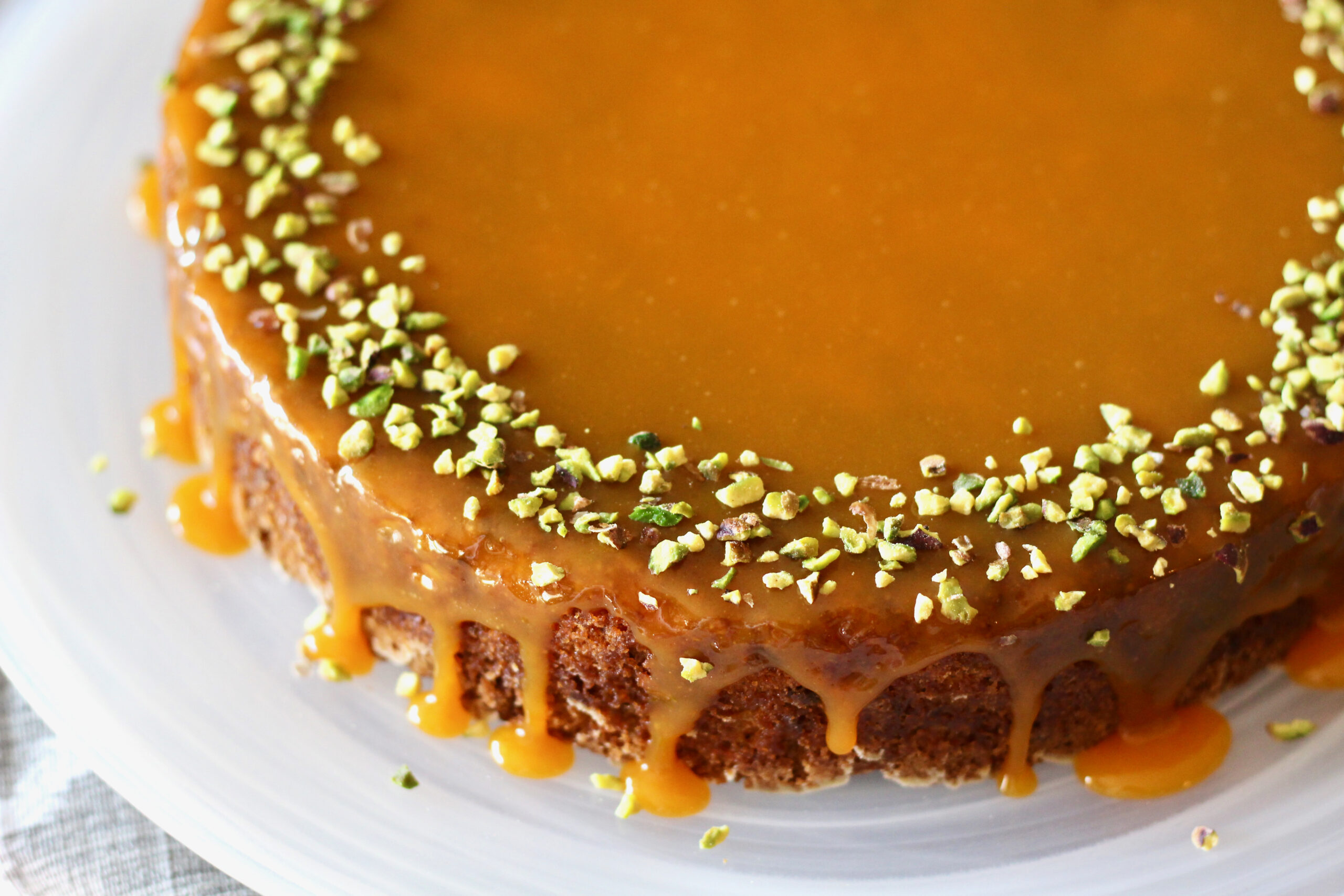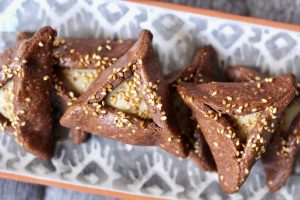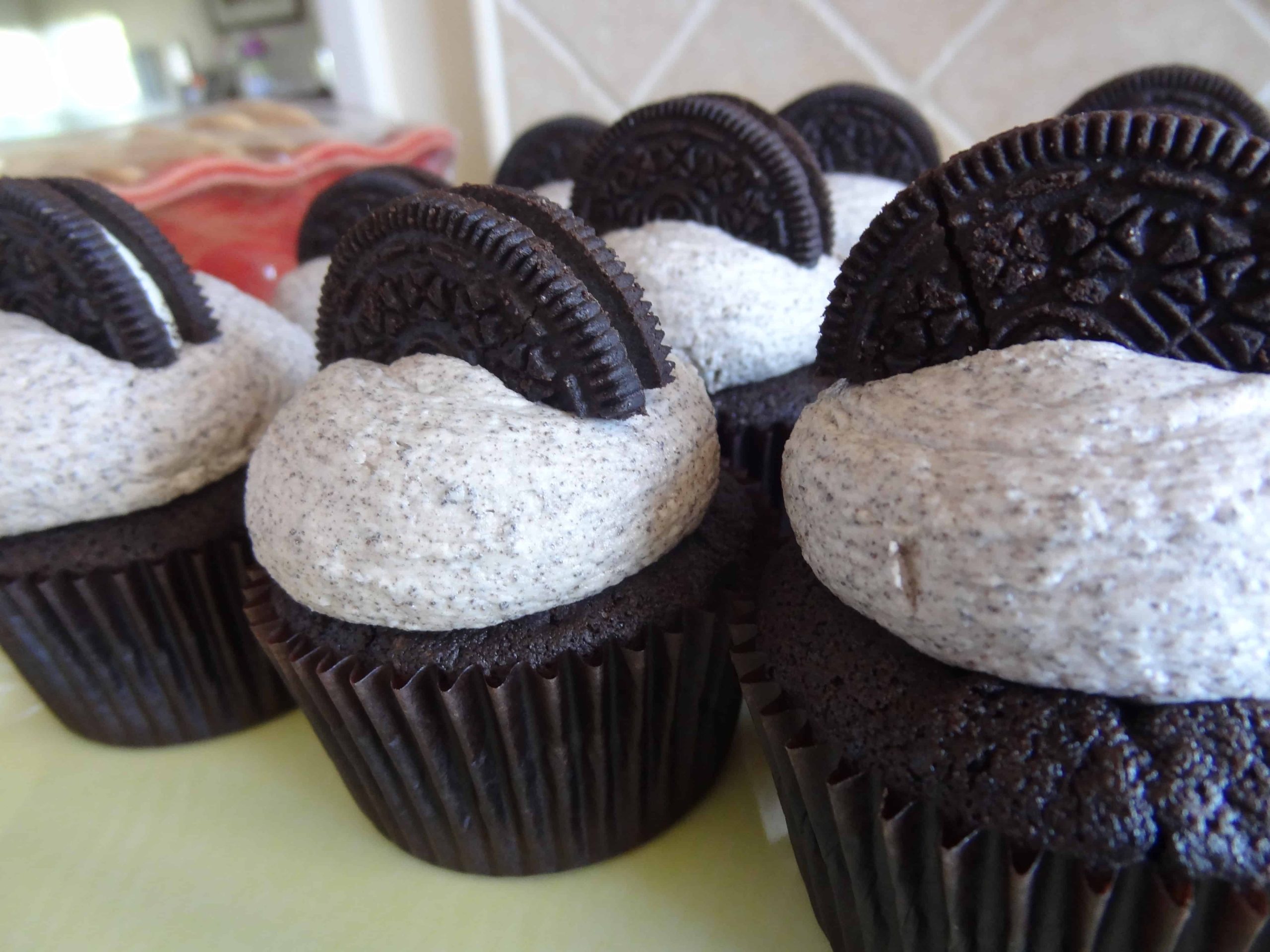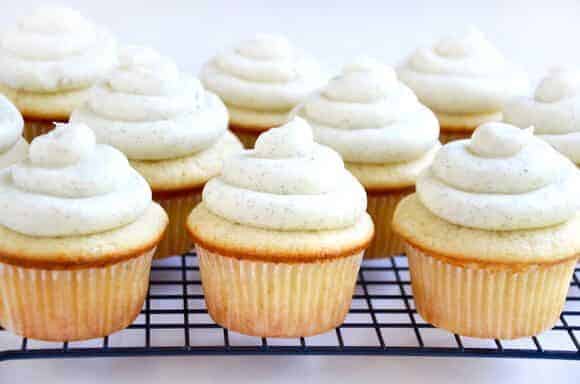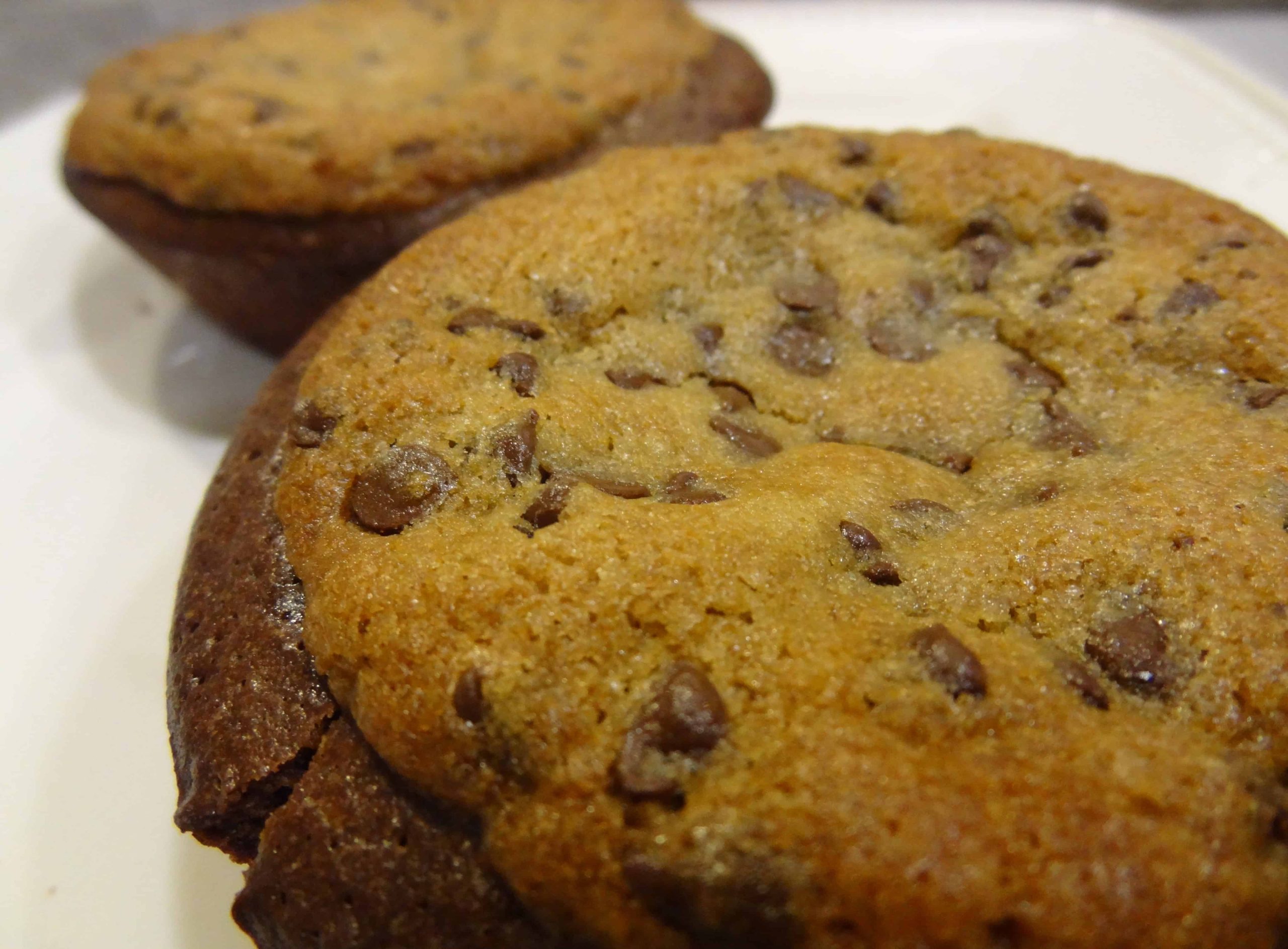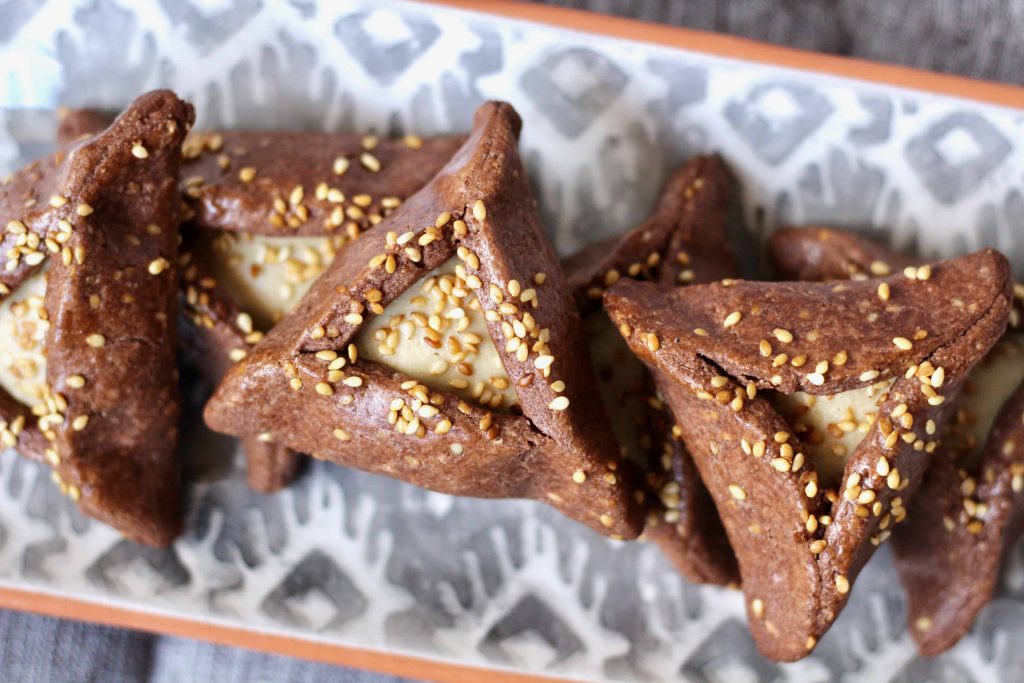
Every year since I did 10 Days of Hamantashen in 2020, I keep telling myself some version of, “I don’t need to make a bunch of flavors this year”, or “Remember how stressful that was last year?”, or the ever-favorite “Stop creating more work for myself.”
But then the “Wellll, it doesn’t take that long to make a double-batch…” and “Ooooh, I could mix [x] into the dough and do a [y] filling!” kick in, and my perennial efforts to cut back on reckless, possibly obsessive hamantashen-making fly right out the window. Did anyone ask for four different flavors at the same time? I meeeean, NO. Was anyone mad about it? Also NO.
Which brings me to 2023. I knew that eventually I’d make a chocolate-meets-halva version, and the ones I tinkered with last year didn’t quite hit all the notes. I started with the cocoa dough from my Double Chocolate Coconut Macaroon Hamantashen and stirred together a very simple halva-hack filling, which was decent, but it needed a little something else. I wanted more sesame flavor, so I sprinkled some seeds on top, and while that helped, it still wasn’t 100%. So this year I returned to examining the dough and had that ah-ha moment I’d been hoping for– adding toasted sesame seeds into the dough itself transformed it from a pleasant cocoa taste to a warm, nutty, complex flavor that was further enhanced by the halva filling. The combination of chocolate and sesame never ceases to amaze me. Don’t skip toasting the seeds because that toasty layer of flavor is essential here, plus the cookies look prettier!
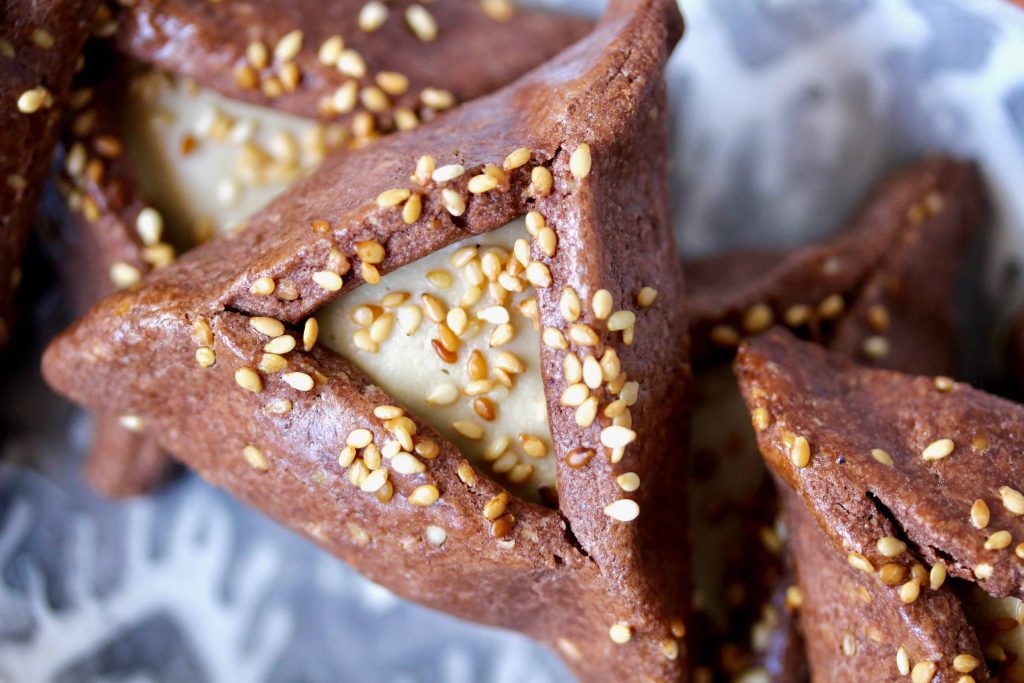
Cocoa Halva Sesame Hamantashen
Yields 30-35 cookies
This recipe doubles very well if you want to avoid splitting beaten eggs and/or have lots of dough for multiple fillings. I strongly recommend using weight rather than volume to measure ingredients.
For the cocoa almond shortbread:
- 375 grams (3 cups + 2 tablespoons) all-purpose flour
- 50 grams (½ cup) blanched almond flour
- 21 grams (¼ cup) Dutch-processed cocoa powder (such as Valrhona), sifted
- 35 grams (¼ cup) white sesame seeds, toasted
- 2 teaspoons kosher salt
- 230 grams (2 sticks/1 cup/8 ounces) cold unsalted butter
- 100 grams (scant 1 cup) confectioners’ sugar
- 50 grams (¼ cup) granulated sugar
- 1½ large eggs, beaten, at room temperature
- ½ tablespoon pure vanilla extract
For the tahini filling:
- 225g (1 cup) pure tahini (sesame paste), such as Soom or Seed+Mill*, well-stirred
- 85 grams (¾ cup) confectioners’ sugar, plus up to ¼ cup additional if needed
- Water, as needed
*You can use any good-quality pure tahini here. However, I’ve found that the texture of the halva filling is smoother and creamier when using one of these, whereas using Trader Joe’s brand yielded a filling that was fine but more crumbly.
For the garnish:
- 1 egg white, lightly beaten for eggwash
- 2 tablespoons white sesame seeds, toasted
Make the cocoa almond shortbread dough:
Line a rimmed half-sheet pan with a piece of parchment paper and set aside.
Whisk together the all-purpose flour, almond flour, cocoa powder, toasted sesame seeds, and salt in a bowl and keep it nearby.
Lay a piece of parchment paper on your work surface and place one stick of butter on top. Smash the butter with a rolling pin several times to soften it, then transfer it to the bowl of a stand mixer fitted with the paddle attachment. Repeat with the remaining stick of butter.
Add the confectioners’ sugar and granulated sugar to the bowl. Mix on low just until the loose sugar is incorporated. Scrape down the bowl and the beater, and mix again for about 30 seconds on medium-low speed. You want the butter to still be cold, and you’re mixing minimally here to avoid aerating the butter.
Pour in the beaten eggs and paddle on low speed until the mixture looks like wet scrambled eggs– the butter chunks should all be coated in egg liberally. Add the vanilla and mix a few more seconds to incorporate it.
Add the dry ingredients to the bowl (gradually if making a double-batch) and mix on low speed until most of the flour has been incorporated; it’s helpful to stop and scrape down the bowl and beater midway through. Make sure to incorporate any loose bits from the bottom.
Turn the dough out onto your work surface and finish mixing it by hand or with a flexible bench scraper to bring it together into one mostly smooth mound. Transfer the dough to the prepared half-sheet pan and flatten it out with your hands or a rolling pin to a thickness of ½-inch. Cover it tightly with a piece of plastic wrap and chill in the refrigerator for at least 2 hours (or until firm), or overnight.
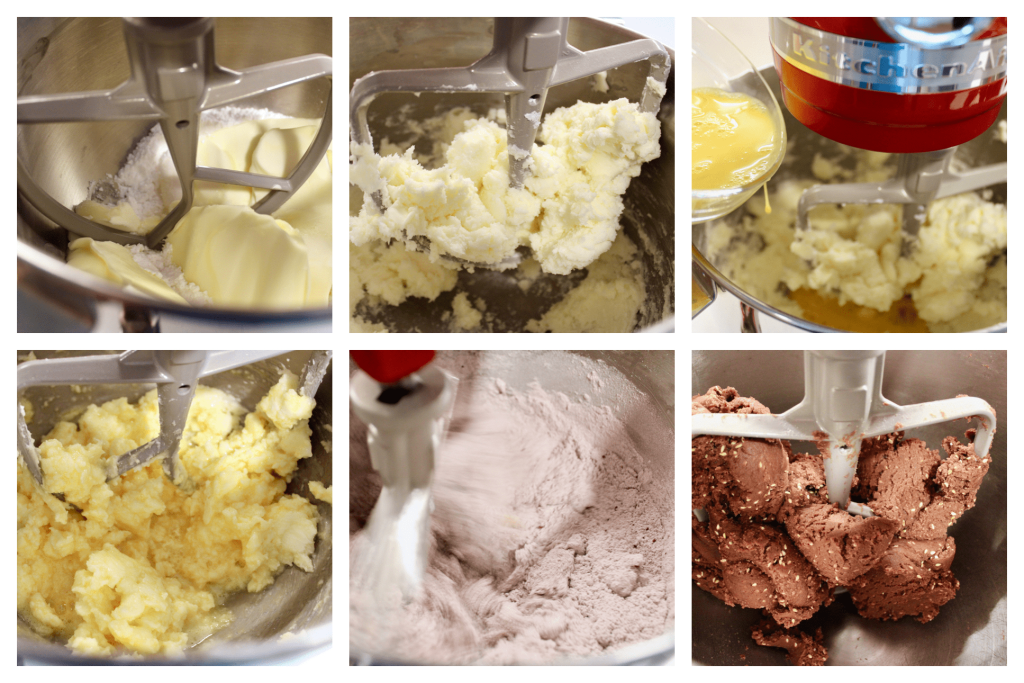
Make the tahini filling:
Pour the tahini into a medium mixing bowl and whisk it to loosen/blend if needed. Stir in ½ cup confectioners’ sugar, switching to a spatula or wooden spoon if the mixture gets too thick to whisk. Add the rest of the sugar one tablespoon at a time; it should end up thick enough to scoop, but still fairly smooth. Add water 1 tablespoon at a time if it’s too stiff. The emulsion may “break” if you add too much water, in which case add a little more tahini and sugar back in to re-emulsify the mixture. Ideally you want a texture a bit creamier than peanut butter that still holds its shape, but it will still be usable even if it’s a bit looser and seems greasy, or if it’s stiffer and more crumbly– it bakes up fine regardless. (Really!) Store the filling in an airtight container in the fridge for up to a day if you’re not using it right away.
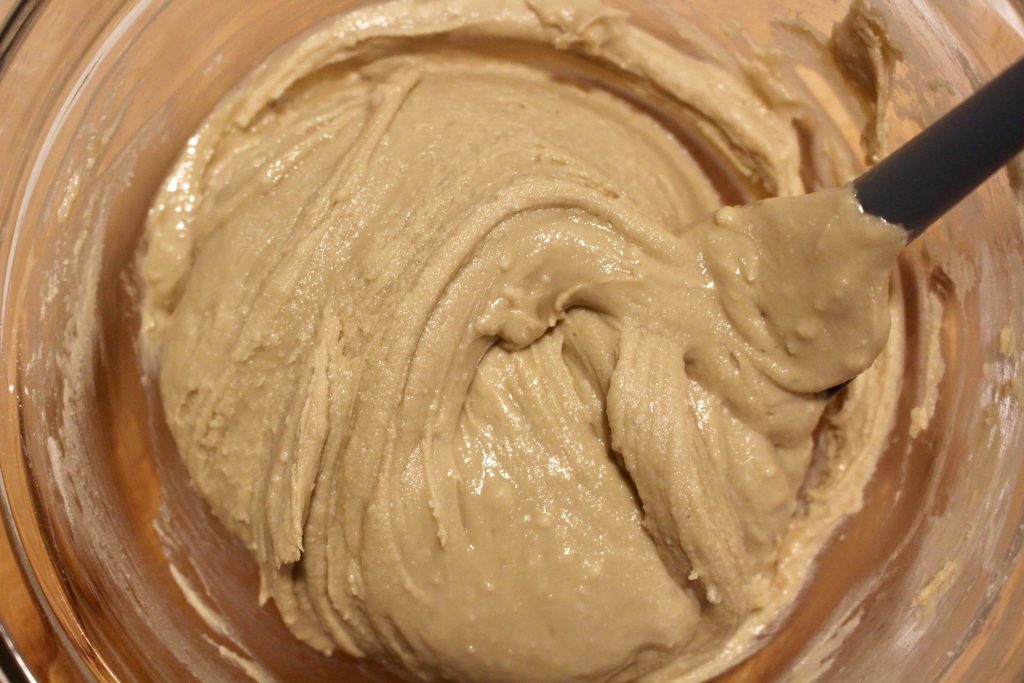
Assemble & bake the hamantashen:
When you’re ready to roll and cut the dough, preheat the oven to 350°F and place a rack in the center position. Line a rimless cookie sheet with parchment paper. Remove the dough from the fridge and let it soften for 5-10 minutes. Place the toasted sesame seeds in a small bowl.
If making a double-batch, cut the dough in half with a sharp knife or bench scraper and work with one piece at a time. On a lightly floured work surface, roll the dough out to a thickness of about ⅛”, flouring and moving the dough around as needed to avoid sticking to the work surface and rolling pin. (I didn’t find it to be exceptionally sticky to begin with.)
Cut out circles with a 3″ round cutter and transfer them to the prepared cookie sheet. Try to cut them out as closely as possible to avoid having a lot of scraps. Re-roll the scraps and repeat until you’ve filled the cookie sheet. If the dough has warmed up and softened too much, place the pan in the fridge for 5 minutes to chill the dough circles. (You can put any warm dough scraps in the freezer for a few minutes to firm up.)
Using a small spring-loaded scoop (or spoon about that size), place about 1 teaspoon tahini filling in the center of each circle; a heaping melon-baller portion is the perfect amount. (If your filling turns out on the stiffer side, flatten the mound slightly.) Do not be tempted to put in more filling– the cookies may open up in the oven.
To create the hamantashen triangle shape, use your fingers to curve up the edges of each circle to meet at three points. Gently press the corners together to seal the edges together, leaving the top open for the filling to peek out. If they crack around the corners or bottom, gently pinch the broken dough back together. Place them on the prepared baking sheet and put the pan in the freezer for 5-10 minutes. Brush the three sides of the triangular cookies with eggwash using a pastry brush. Sprinkle each with the toasted sesame seeds.
Bake the hamantashen for about 14-16 minutes, or until the corners are very lightly golden, rotating the pan halfway through. Set the pan on a metal rack to cool completely.
Store the cookies in an airtight container for up to 3 days or so… if you can manage not to eat them in one sitting.
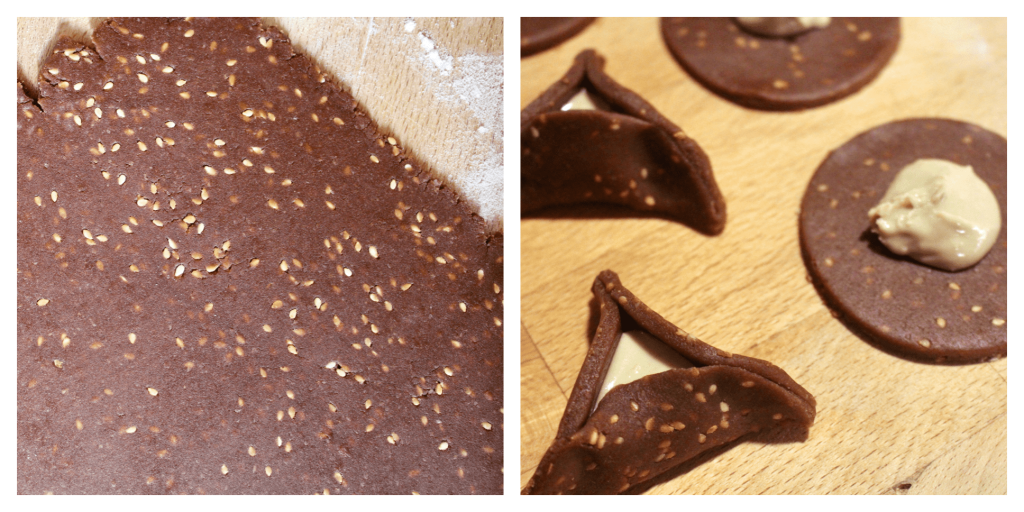
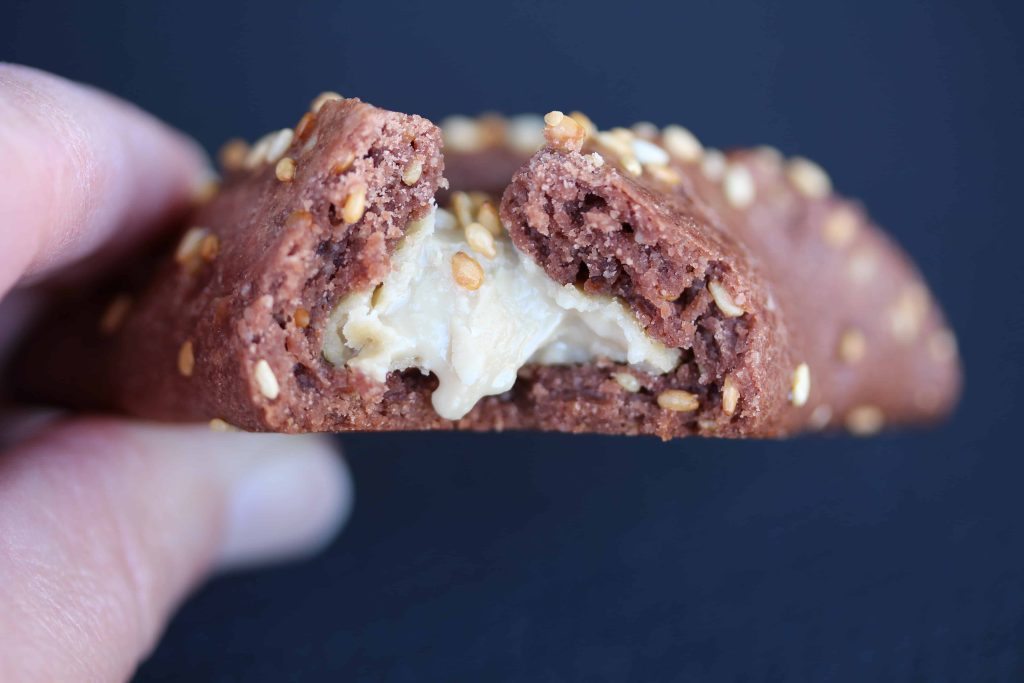

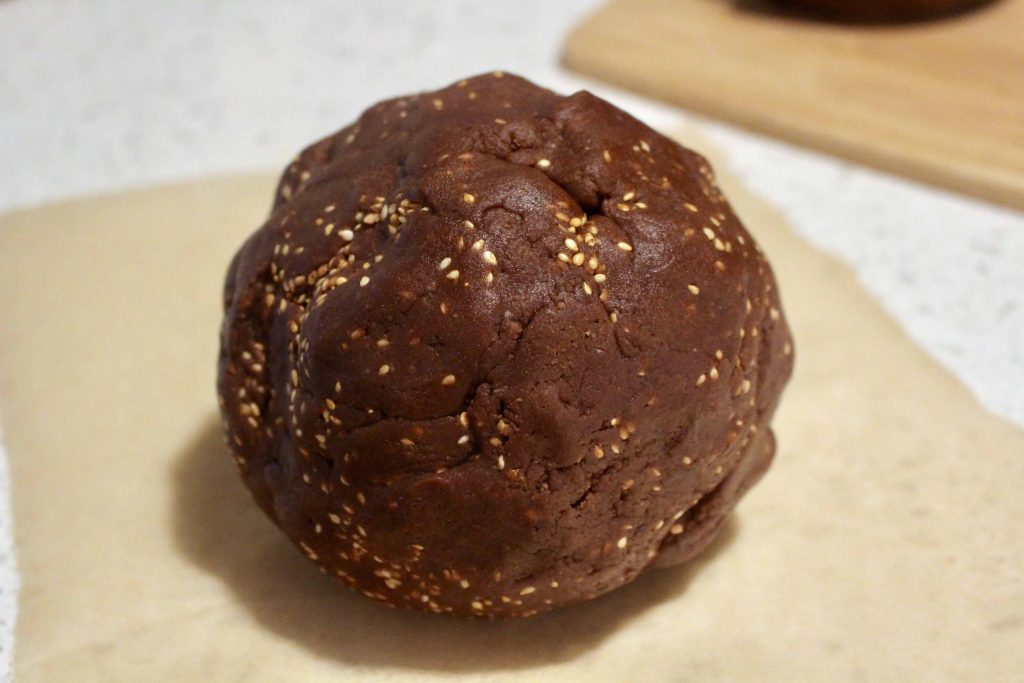
© Dafna Adler & Stellina Sweets, 2023.




